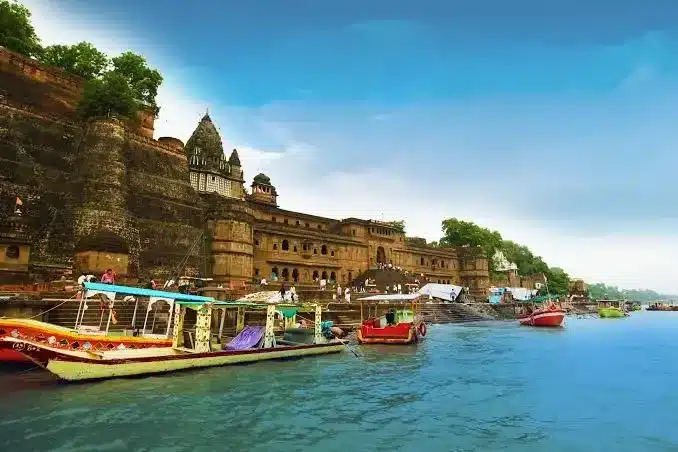About Shipra River
- The Shipra, also known as the Kshipra, is a river in Madhya Pradesh state.
- It is a perennial river and is considered as sacred as the Ganga River by the Hindus.
- Course:
- Origin: It originates in the Vindhya Range from a hill called Kakri-Tekdi, which is in the north of Dhar and situated at a distance of 11km from Ujjain.
- This river is 195km long, out of which 93km flow through Ujjain.
- It flows across the Malwa Plateau to join the Chambal River.
- Religious Significance:
- The Puranas, or ancient Hindu texts, put forward that the Shipra originated from the heart of Varaha, Lord Vishnu’s incarnation as a boar.
- Also on the banks of the Shipra is Sage Sandipani’s ashram or hermitage, where Krishna, Lord Vishnu’s eighth incarnation, had studied.
- It finds mention not only in ancient Hindu texts but also in Buddhist and Jain scriptures.
- The holy city of Ujjain is located on the right bank of the Shipra River. The famous Kumbha Mela takes place in the ghats of this city, once every 12 years, a yearly celebration of the river goddess Kshipra.
- Major Tributaries: Khan and Gambhir
Q1) Which are the major tributaries of the Chambal River?
The tributaries of the Chambal include KShipra, Choti Kalisindh, Sivanna, Retam, Ansar, Kalisindh, Banas, Parbati, Seep, Kuwari, Kuno, Alnia, Mej, Chakan, Parwati, Chamla, Gambhir, Lakhunder, Khan, Bangeri, Kedel and Teelar.
Source: CAG alert on unacceptable pollution of Kshipra river in Madhya Pradesh
Last updated on November, 2025
→ Check out the latest UPSC Syllabus 2026 here.
→ Join Vajiram & Ravi’s Interview Guidance Programme for expert help to crack your final UPSC stage.
→ UPSC Mains Result 2025 is now out.
→ UPSC Notification 2026 is scheduled to be released on January 14, 2026.
→ UPSC Calendar 2026 is released on 15th May, 2025.
→ The UPSC Vacancy 2025 were released 1129, out of which 979 were for UPSC CSE and remaining 150 are for UPSC IFoS.
→ UPSC Prelims 2026 will be conducted on 24th May, 2026 & UPSC Mains 2026 will be conducted on 21st August 2026.
→ The UPSC Selection Process is of 3 stages-Prelims, Mains and Interview.
→ UPSC Result 2024 is released with latest UPSC Marksheet 2024. Check Now!
→ UPSC Prelims Result 2025 is out now for the CSE held on 25 May 2025.
→ UPSC Toppers List 2024 is released now. Shakti Dubey is UPSC AIR 1 2024 Topper.
→ UPSC Prelims Question Paper 2025 and Unofficial Prelims Answer Key 2025 are available now.
→ UPSC Mains Question Paper 2025 is out for Essay, GS 1, 2, 3 & GS 4.
→ UPSC Mains Indian Language Question Paper 2025 is now out.
→ UPSC Mains Optional Question Paper 2025 is now out.
→ Also check Best IAS Coaching in Delhi

















